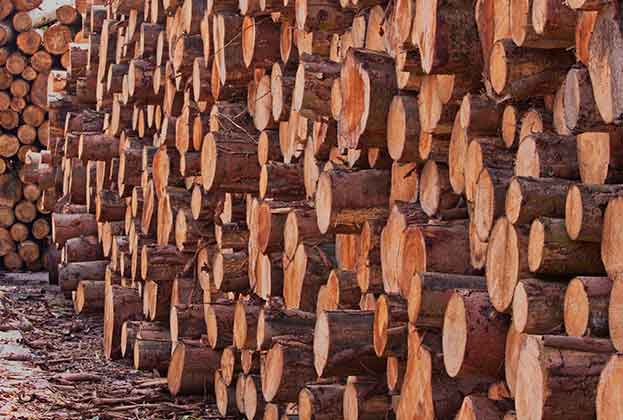If the UK is to meet its net zero target, over 30,000 hectares need to be planted with trees every year
Currently, 13% of the UK’s total surface area is forested, which is almost three times more than in 1905, when the Forestry Commission began recording data. However, the Climate Change Committee (CCC) has said the UK needs to increase its forestry cover from 13% to at least 17% by 2050, if it is to reach its legally binding net zero emissions target of 2050. Trees sequester carbon as they grow – the CCC reports that increasing UK woodland cover by 4% would deliver annual sequestration by 2050 of 14 MtCO2e, with an additional 14 MtCO2e from harvested materials. To reach this tree cover requirement, over 30,000 new hectares of land need to be planted with trees every year.
Tree planting targets
The UK government took the CCC’s advice and has committed to upscaling tree planting to 30,000 hectares each year by 2025. Exactly how this target is split between devolved nations is less clear. However, each nation has put forward its own tree planting target (see chart below). Between 2020 and 2021, 13,300 hectares of new woodland were created in the UK, which is equivalent to 44% of the UK’s overall target.
In England, the government wants to treble tree planting rates by the end of the current parliament to at least 7,000 hectares of new trees per year, in order to achieve 12% woodland cover in England by 2050. This equates to 0.08% of farmland in England being converted to woodland each year. Across the home countries, performance against these targets varies greatly, with Scotland nearest its target at 59%.
Financing tree planting
In order to incentivise woodland creation, the government is increasing the public funding available to support land managers with the upfront costs of planting new trees. Government grants in England can provide up to £10,000 for every hectare of new woodland created. See the table below for the details of the grants available across the devolved nations.
It is important to remember that although these grants contribute to the initial costs of woodland creation, they do not provide long-term finance for forestry. The value of commercial forestry is realised as timber income, which takes a minimum of 30 years to generate, and is dependent on timber values at that time. Less commercial woodlands are often reliant on a diversification such as a tourism or leisure enterprise to generate an ongoing income stream. Private markets such as carbon also offer potential income streams for woodland creation.
Barriers to planting
Despite the drive to plant more trees, there are significant barriers to upscaling tree planting across the UK:
THE CARBON POUND
Selling sequestered carbon to the private offsetting market is seen as a key way to incentivise land managers to plant new trees. The most common accreditation in the UK is the Woodland Carbon Code (WCC). As of March 2021, there are 708 woodland creation projects under the WCC, which represents 31,000 hectares of new woodland that will over their lifetimes sequester 1.1 million tonnes of CO2e.
The private market for carbon offsets is in its infancy and there is a need for clearer governance of the marketplace. Carbon prices vary too and so far there is no standardised register to track them within the offsetting market. However, across the four Woodland Carbon Guarantee Auctions in England since 2020, the average price for woodland carbon is £19.94 per tonne of carbon.
.jpg)
Food vs trees
How woodland can support existing rural businesses
For many farmers and rural land managers, the decision to change land from producing food to growing trees is not an easy one to make and nor should it be. Ultimately, decisions will be based upon terrain, soil type, climatic conditions, location and each individual rural business model. However, alongside the environmental drivers of tree planting, there are additional benefits to woodland creation that can support existing rural businesses.
- Agroforestry This has received growing interest over the past five years. It focuses on integrating trees with livestock, arable or horticultural systems. There is still investment needed to make agroforestry mainstream in the UK.
- Scale Land managers don’t have to plant the whole of their farm with trees. Establishing smaller pockets of woodland is good for increasing environmental connectivity. Planting copses in areas that are less productive can aid with creating more efficiently shaped fields – for example, by planting trees in awkward corners. It is important to make sure tree planting is at an appropriate density if future timber production is an objective.
- Public access Planting woods with the intention of creating new footpaths within them can help land managers meet community expectations of and requirements for public access, without having to compromise on more productive parts of the farm, where public access could carry a risk.
- Biodiversity A diversity of tree species and habitat types supports farm wildlife, which strengthens the resilience of natural ecosystems.
Read the articles within The Forestry Market below.

